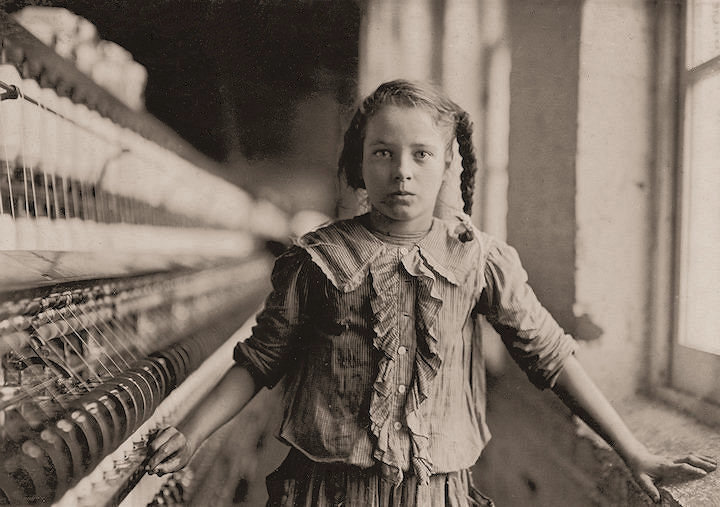The definition for Documentary Photography is: “Documentary photography usually refers to a popular form of photography used to chronicle events or environments both significant and relevant to history and historical events as well as everyday life.” The purpose of documentary photography can essentially vary among the individual purpose of the individual using documentary photography to achieve a desired objective. The spectrum of opportunities available are very wide in how documentary photography can be used to document a series of events and inform others, by exposing them to the historical context of the documentary and within this, the social, political and economic contexts. What stands out with documentary photography, its purpose was never although to inform, was to necessarily influence our view on something (like an advertisement) but more so to broaden our gaze what the wider world is really like. For the viewer this is particularly useful in understanding other people’s perception of the world in order to help us recognise where we stand on certain views. Examples of this throughout history have been to document the hardships of child labour and poverty. An example of another photographer’s work documenting child labor is Lewis Hine. Here he used documentary photography to show us and allow us to explore these suffering people’s worlds and day to day experience by documenting their living conditions.




Aside from this point, regarding to the idea of documentary photography documenting the realities of life. This style of photography can be used in a more fiction based style that show how the artist perceives the world around him and how this has affected him and his daily life. The collection of photographs building up to a certain point or issue that the photographer leads us to is essentially a story, which can be either more fiction based or factual. Either way the idea of a story allows us to comprehend the result of our actions as it leads us in a direction where we may not necessarily feel in control of. In respect of this we then have to live and accept with it unless we want to take action and change the wrongdoing of what the documentary photography is showing us. Therefore documentary photography can be a powerful tool in ensuring people are informed of the wider world. Evan today contemporary photographers show through the use of documentary photography that there is perhaps more child labor and poverty today than there was back in the 19th century. For example, photographer Chris Steele-Perkins documents the realities of the wider world that we in the sophisticated and western hemisphere are ignorant to.



On the other hand tableux photography shows a slightly different side of the coin but could have potential in using this style of photography for similar purposes for documentary photography. The definition for Tableux photography is “a style of photography where people are staged in a constructed environment and a pictorial narrative is conveyed through a single image.” This arguably makes it harder to achieve similar principles of telling a story as compared to documentary photography however I believe it can be achieved but through more levels of subtlety. For example, you could capture an event on camera but also showing possible reactions of those around allowing us to lead on and expect how a story might turn out with eventual consequences perhaps. It must be taken note of that to tell a story for the photographer to communicate an intended message through a story captured “accidentally” is rather difficulty and for that reason, Tableux photography is generally staged. With added subtleties, it can be harder for the viewer to understand the message of the photograph compared to documentary photography and so can be left more often than not to be interpreted by the viewer. Photographer Anna Gaskall uses the idea of staged and Tableux photography to construct images that perhaps reflect her view or opinion of the world and so, as that is very quite personal to her, she wishes to convey her feelings towards a particular feature of the world that can’t be expressed through documenting the reality, but only the fantasy which is where this is linked to both styles.




Because these photographs are more often staged there is a strong sense of control as to how each part of the photograph makes up a strong composition and therefore there is arguably more significance as to each individual part of the photograph in telling a story. For that reason, it is accepted that these photographs are often exaggerated to get the message across and so unlike documentary photography, these photograph’s purposes are less so to inform but more to persuade, influence or alter my opinion. Therefore alongside the fact that documenary photography may pose to show a certain reality of life, Tableux is essentially the opposite as it creates a more fiction based story to tell us. Fiction or not, both forms of photography are extremely effective if used in the correct way at communicating messages on very similar subjects.

Very thoughtful and philosophical text with excellent use of specialist words e.g. gaze etc.
Illustrate your essay with visual examples and photographers, e.g. child labour include both a historical and contemporary photogarpher – Lewis Hine and photo-agencies where you can serach ‘child labour
http://pro.magnumphotos.com/C.aspx?VP3=SearchResult&VBID=2K1HZO69JJD5TZ&SMLS=1&RW=1295&RH=867
https://www.panos.co.uk/bin/panos2.dll/go?a=disp&rs=1&pt=1&_m=2&_men=menu_2&_yp1=0&usp=0&_spe=0&t=sr-loadersearch.html&searchtext=child%20labour&_rve=1&_sf0=&_sf1=&_sf2=&_sf3=&_sf4=&_sis=1&si=0956EA7582AA4872BB65AD0AB509BD&rnd=1701.18
https://www.lensculture.com/search/projects?fallback=not-found&q=child+labour
watch this video too: https://www.youtube.com/watch?v=b-z_jpIMf2c